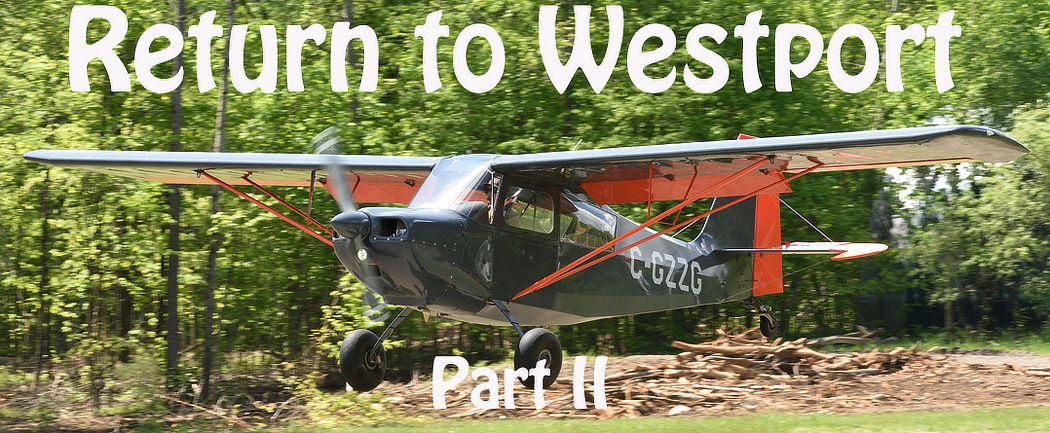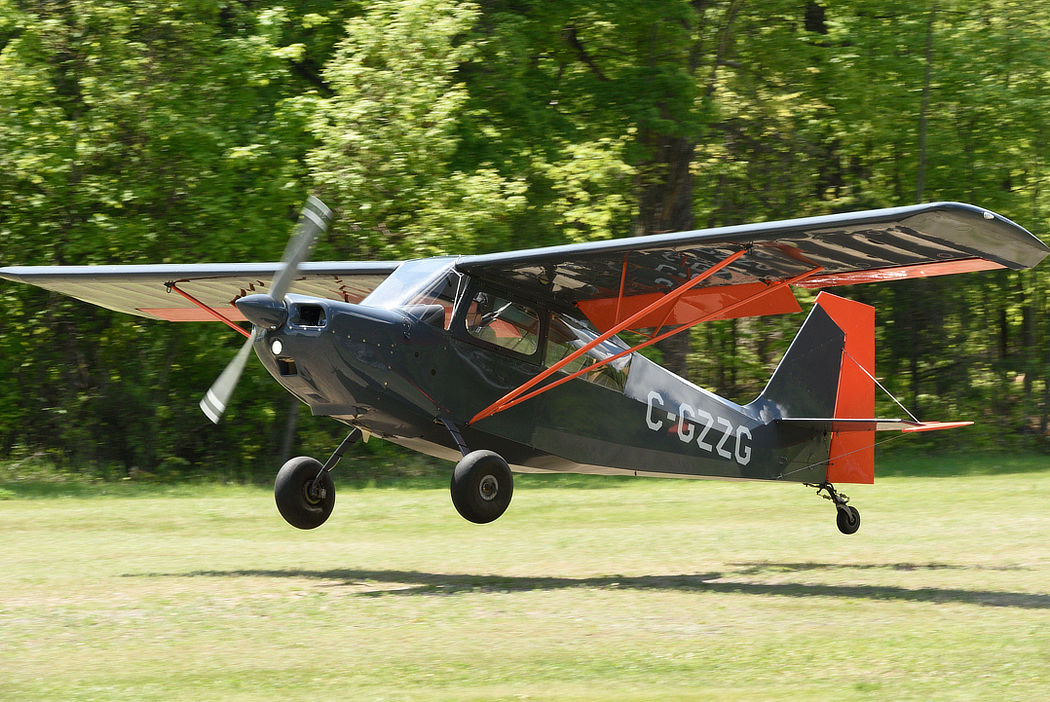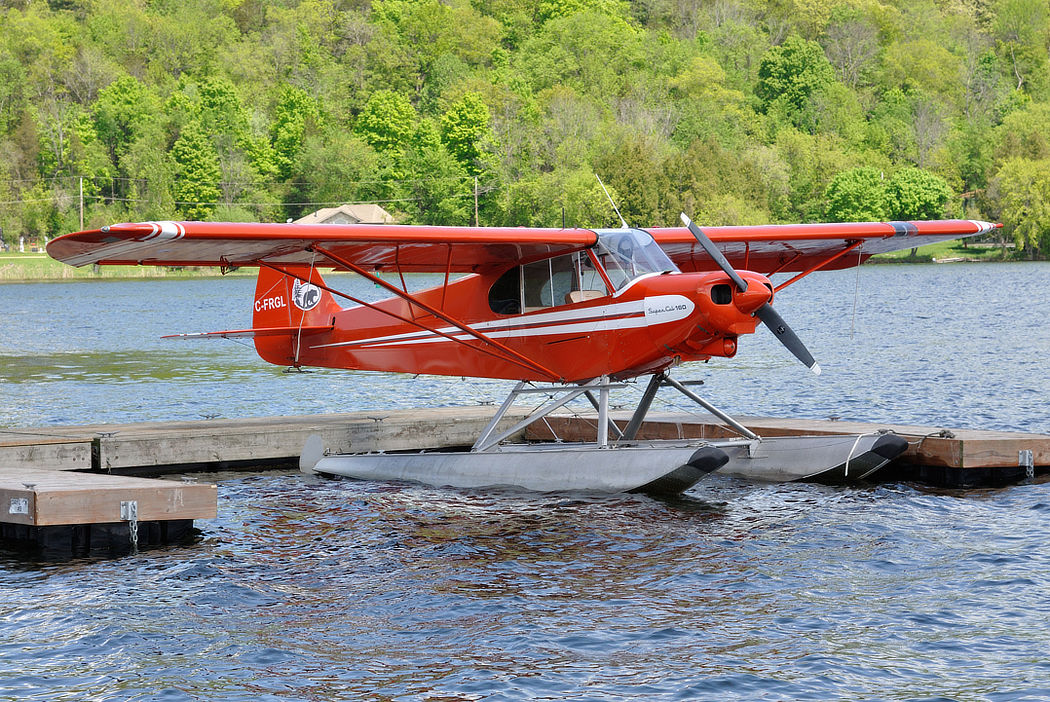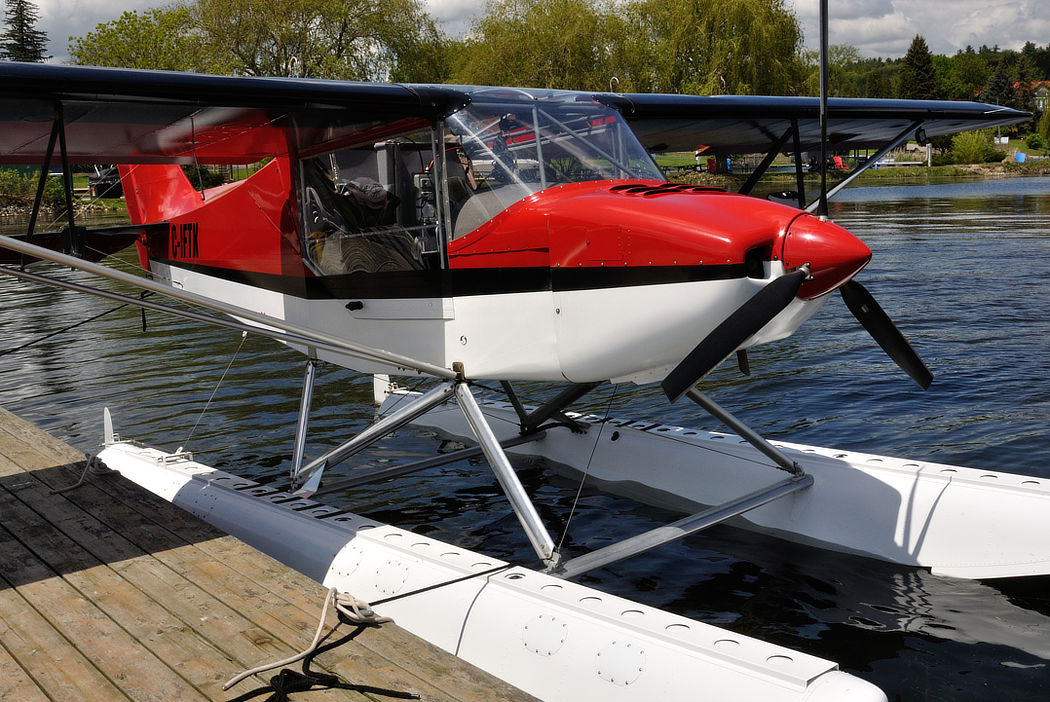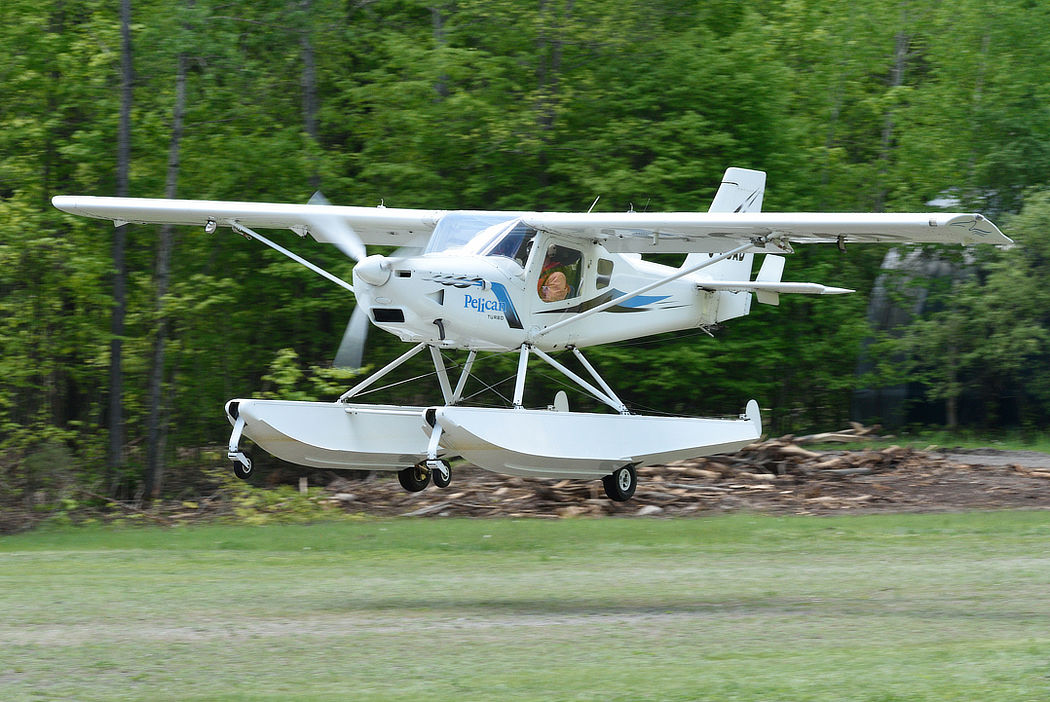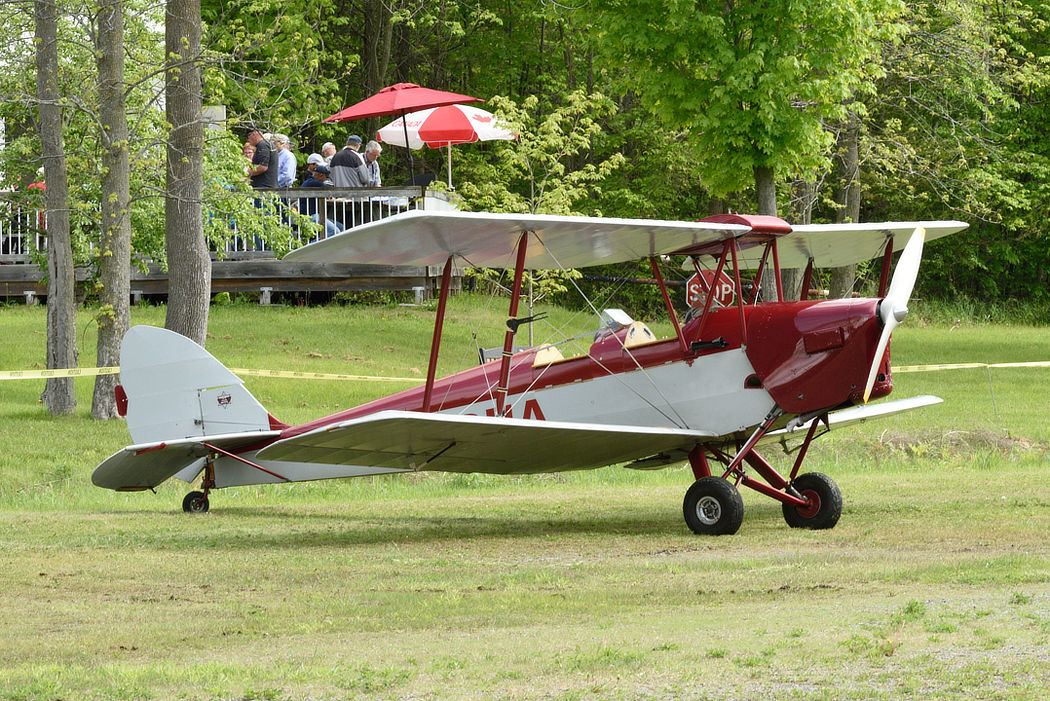ISSUE 882 - July 30, 2024 • Over 7,000 Total Ads Listed • 1,000+ NEW Ads Per Week
This eFlyer Has Been Sent To Over 155,000 Subscribers
|
| Return to Westport - Part 2 |
| Kevin Moore, Contributing Writer & Photographer |
|
Last week we visited the 2024 Rideau Lakes Aerodrome spring fly-in and some of the aircraft that flew in for breakfast. This week we return to have a look at more of the visiting aircraft that made the visit from various points in eastern Ontario.
|
|
|
| Very attractive Citabria arrives late morning for breakfast at Rideau Lakes Spring Fly-in 2024. |
|
|
|
The Piper PA-28 line of aircraft are the fourth most produced general aviation aircraft
in the world. |
|
Piper was well represented with the Piper PA-28 aircraft visiting from different areas of southeastern Ontario. The PA-28 is a 1960 design from Piper Aircraft, with the PA-28-140, PA-28-150 and PA-28-160 with the 180 introduced in 1963. Further development saw an assortment of variants with changes to the aircraft such as an extended fuselage for more passenger legroom, longer wings, different throttle system, larger fuel tanks and some models with wingtip fuel tanks and retractable landing gear
|
|
|
|
| The PA-28 can be seen at fly-in events, airports and private strips just about everywhere. |
|
Though typically referred to as the Piper Cherokee, model names included the Warrior, Dakota, Archer, Arrow and Charger and some variations known as the Cruiser, Pathfinder and Challenger. The original Piper Aircraft Company declared bankruptcy in 1991 but a new Piper Aircraft Company emerged in 1995, eventually being renamed as Piper Aircraft in 2006. The PA-28 line of aircraft have been produced since 1960 to present day with more than 32,000 having been built.
|
|
|
|
| The Safari 400 departs after breakfast, left. The DHC.82 Tiger Moth sports the original airspeed indicator, attached to a wing strut, right. |
|
Though most pilots fly-in for the breakfast fly-in, the town of Westport has a lot to offer anyone who wants to spend time in the village itself. From a bank and a bakery to assorted gift shops, restaurants, and ice cream parlour, a hardware store, a Royal Canadian Legion and an inn and more. In Westport you can enjoy a nice stroll around the village and visit the local museum. There's lots to do and see in Westport and the surrounding area.
|
|
|
|
| The Stinson 108 Voyager is a beefy taildragger but is a popular "family" aeroplane. |
|
Shifting back to visiting aircraft, a lovely Stinson 108 Voyager dropped in for breakfast. The Voyager first flew in 1939 and was manufactured by Stinson Aircraft Company, a division of the Consolidated Vultee aircraft company and was built in Wayne, Michigan. There were 277 built, having evolved from the Stinson 105, 10/10A designs, post-war. Though the original design was as a 3 place aircraft, later models could accommodate 4 or 5 people, including the pilot. The empty weight of a 108 is 1300lbs, all up weight 2400lbs with a cruise speed of 121mph, stall of 65mph and a range of approximately 510 miles.
|
|
|
|
| The village of Westport is situated on Upper Rideau Lake and the village docks area available for both boaters and pilots who fly in with their floatplanes such as the Ran's S-6S (Super) Coyote II, left, or the venerable Piper Super Cub, right. |
|
The village of Westport is situated in the lovely Rideau Lakes region. Comprised of an assortment of lakes and small villages such as Rideau Ferry and Forfar, it's a beautiful area of Ontario in every season with canoeing, kayaking, parasailing, power & sail boating and swimming in warmer months and snowmobiling, ice skating, cross-country skiing, tobogganing and even downhill skiing in winter as well as ice fishing. There's something for every member of the family, even assorted farmer's and vendor's markets, antique shops and more.
|
|
|
|
| The iconic de Havilland of Canada DHC.82 Tiger Moth. |
|
The other de Havilland of Canada aircraft to visit the fly-in was a stunning example of the DHC.82 Tiger Moth, lovingly restored over 11 years by its owner. The Tiger Moth is a British aircraft designed by Geoffrey de Havilland and was originally built by the British de Havilland Aircraft Company in 1931. It was a highly successful training aircraft during World War II, utilised by the Royal Air Force and by the BCATP (British Commonwealth Air Training Plan) across Canada to train aircrews to fly and fight during World War II, as well as in Australia, New Zealand and other Allied countries.
|
|
|
|
| The DHC.82 Tiger Moth is powered by a Gypsy Major engine which produced 140-145hp. |
|
The Canadian built Tiger Moth differed somewhat from its British counterpart in that it had a cockpit heating system, as well as a fully enclosed cockpit, for those cold Canadian winters, as well as a tail wheel verses the British version tail skid. The Canadian version also has wheel brakes, a more powerful engine, a more robust wheel axle that could handle skis for winter flying and the cockpit canopy was jettisonable. There were more than 6000 Tiger Moths produced of which in excess of 1700 built in Canada between 1937 and 1944, equipping more than 20 flying schools across the country, amassing in excess of 1.7 million flying hours.
|
|
|
|
| The Flight Design CTSW, left, preparing to depart after a hearty fill up for the pilot & passenger. A Cessna 180, right, climbs away on departure, heading home after breakfast. |
|
Though there are fewer fly-ins these days verses pre-covid, they are making a come back at many airports, not just in Canada but in the US and around the world. For many pilots it's an opportunity to fly somewhere, enjoy a meal, enjoy the company of other like-minded folks, chat with interested and interesting people and maybe fly to an airport they wouldn't normally get to. The experience of flying to different airports and airstrips helps to improve one's ability and can make a pilot more comfortable with their aircraft and with different airport features. You may feel that you're own flying experience or time in your aircraft isn't enough for a visit to an alternate fly-in but don't let that stop you. Challenge yourself to increase that knowledge and experience that will further enhance your own ability. Take a family member, a friend or maybe that someone that's sitting at your local airport just watching the aeroplanes come and go. Who knows, maybe they'll treat you to breakfast/lunch.
|
|
|
|
| RV-6, left, and J3 Kitten, right, heading home though the RV-6 will likely arrive at their destination much faster. |
|
The Rideau Lakes Aerodrome (CRL2) is a wonderful airstrip to fly into. Whether your approach is in over the lake or coming in from the opposite end over the trees, it will help improve your own skills and confidence. The 3200' runway offers plenty of room for a longer landing or take off and it's wide enough for larger GA aircraft. The flying club members are always welcoming and friendly as are everyone in the village. You can make a day, weekend or week of it, leaving your aeroplane tied down at the aerodrome. Make a point of attending one of the three seasonal fly-ins at Rideau Lakes, including a summer ultralight focused fly-in and the fall fly-in during the first weekend of October where you can enjoy a delicious sausage, salads and more. Rideau Lakes Aerodrome and Westport will welcome you with open arms.
|
|
|
|
| Cessna 172, left, on final. Piper PA-22 Colt climbing away, right. |
|
|
|
| The lovely de Havilland of Canada DHC-1 Chipmunk returning to the sky, left. The Luscombe Silvaire 8A, right, heading out. |
|
|
|
| The de Havilland Tiger Moth fuselage decal, left. The front cockpit of the Tiger Moth, right. |
|
|
A gorgeous Piper Super Cub moored at the village docks while the pilot visits
the aerodrome for breakfast. |
|
|
| Alongside the Piper Super Cub was the Ran's S-6S (Super) Coyote II, safely tied dockside. |
|
|
|
| The Acey Deucy, left, taxies to the parking area so her pilot can park and make his way to the clubhouse for breakfast. Piper PA-22 Colt in the parking area, right. |
|
|
| Beautiful amphibious Pelican just before touching down, one of 3 floatplanes to make the trip but the only fully amphibious one to land at the aerodrome. |
|
|
| The Tiger Moth sits near the flying club while her pilot enjoys his breakfast. |
| By Kevin Moore, Contributing Writer & Photographer
|
|
| |
|


